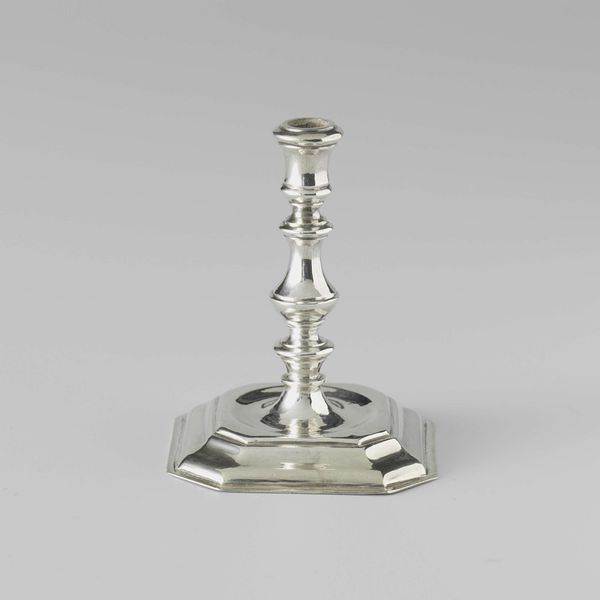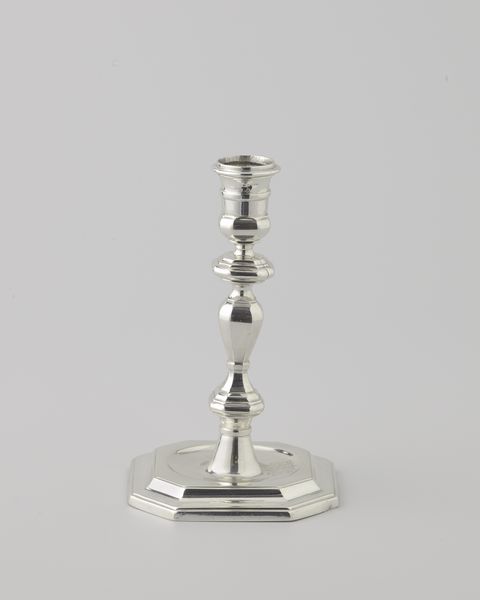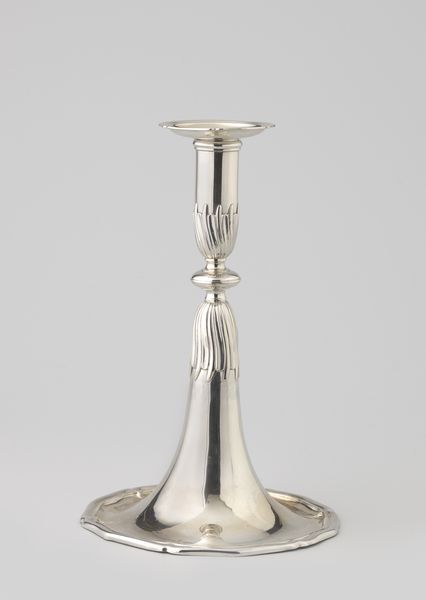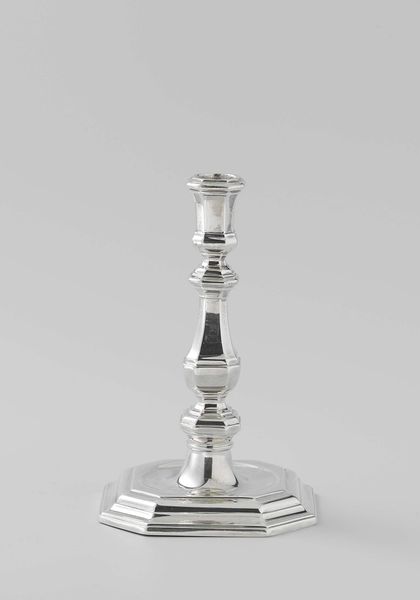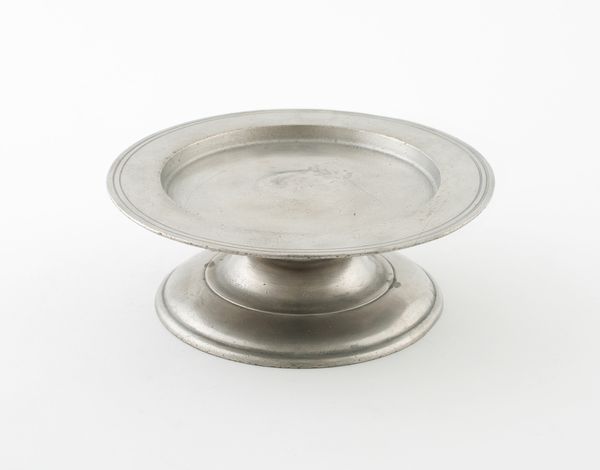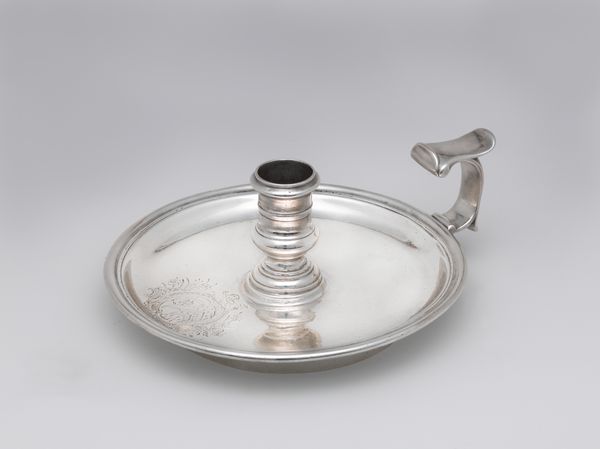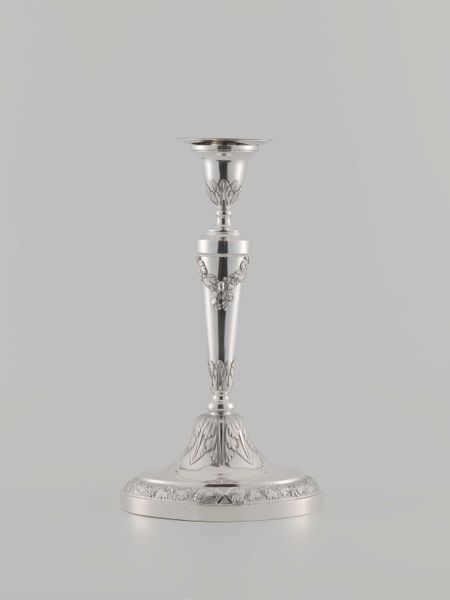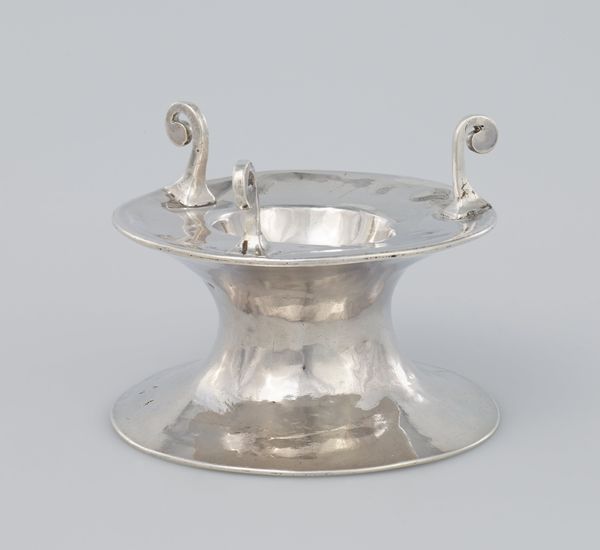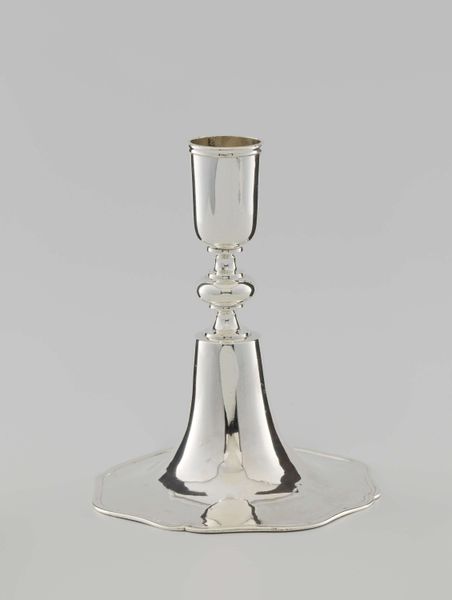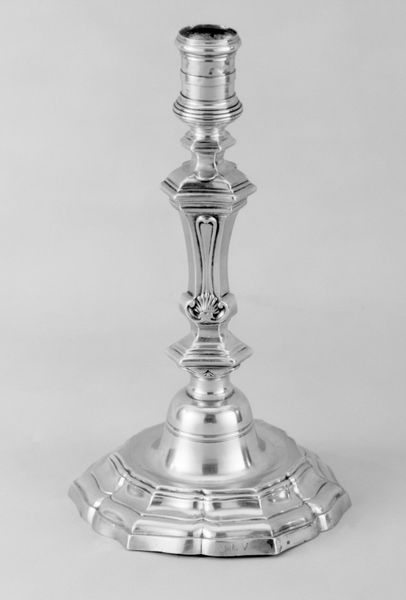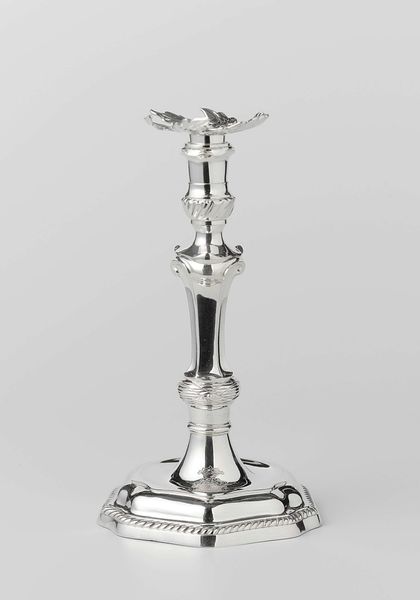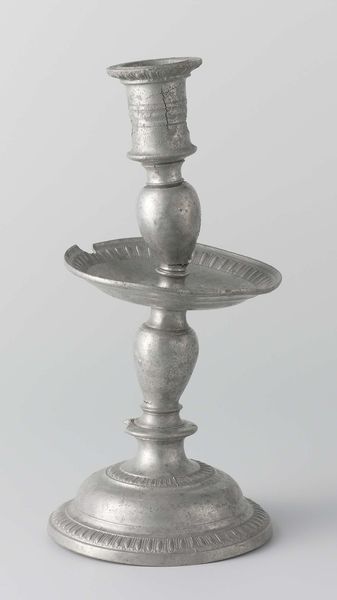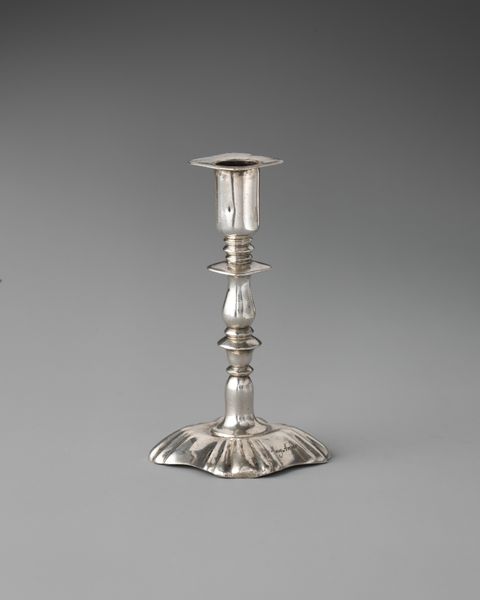
Blaker van zilver, komvormig blad met stam waarop cilindervormige kaarsenhouder met smalle vetvanger. 1752
0:00
0:00
silver, metal, sculpture
#
silver
#
baroque
#
metal
#
sculpture
#
decorative-art
Dimensions: height 9.8 cm, diameter 12.7 cm, weight 209.0 gr
Copyright: Rijks Museum: Open Domain
Curator: Here we have an object crafted in 1752 by Gregorius van der Toorn, a 'Blaker van zilver, komvormig blad met stam waarop cilindervormige kaarsenhouder met smalle vetvanger’– that's a silver candlestick with a bowl-shaped base, meant to catch wax. What are your initial thoughts? Editor: Striking! It’s so restrained, despite being baroque. It almost feels severe, doesn't it? Functional elegance rather than excessive display. All that light reflecting, cool and distant. Curator: The ‘blaker,’ or bougie box, as these were also known, reflects societal shifts of the time. Think about candlelight and labor, who possessed leisure. This wasn’t about mere illumination. This spoke to class and commerce, as a decorative piece that speaks volumes about wealth and social capital. Editor: Absolutely, silver was always about power and status, a display of tangible assets. But there is also a connection to earlier forms, that dish could just as easily be offering to a household deity in a much more ancient ritual, and the light provided might also be about guidance of safe passage into the land of the dead. Silver being linked to the moon's light. Curator: Yes, certainly, and think too about the gendered implications of silver objects within the domestic sphere. This likely belonged to a wealthy family, representing a wife's status and taste. It might have served to highlight a certain refined taste, demonstrating the family’s dedication to commerce and social status, and therefore the social roles women inhabited at the time. Editor: But the silver, that very material suggests immortality. Untarnished wealth for eternity! Think of the psychological pull—this is a promise against darkness, material as spirit made manifest. Curator: It reminds us, the object’s symbolism and aesthetic must always be considered within its historical context. Examining such an artifact enables a more complete understanding of class, labor, and the dynamics of social life, during the Baroque. Editor: Yes, indeed! It illuminates, in more ways than one! It's far more than just a source of illumination, really a cultural lodestar to interpret.
Comments
No comments
Be the first to comment and join the conversation on the ultimate creative platform.
